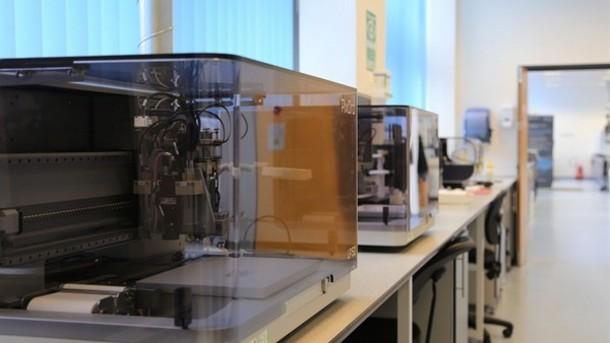Remember when you were a kid and you just didn’t feel right, how your mom would make you a big, steaming hot bowl of cellulose to warm your tummy? No? I don’t either. However, members of the Engineering and Physical Sciences Research Council (EPSRC) and the UK Knowledge Transfer Network (KTN) are working with the food industry to utilize cellulose particles as building blocks for 3D printing food.
The efforts here are to integrate additive manufacturing with advanced food production techniques so that AM isn’t just replicating what can be done by already existing processes and mechanisms. Rather than introducing 3D printing for novelty’s sake, the team of researchers are hoping that it can help to address some of the fundamental problems with current food distribution across the globe.It’s not as simple as feeding ingredients into a 3D printer. In fact, discovering exactly what edible ink needs to be is a primary focus of the collaboration. Dr. Jennie Lord, National Center Manager and Technology Translator at EPSRC, spoke at the 3D Food Printing Conference held recently in Venlo, the Netherlands, and explained the difficulties of arriving at the right formulation for the printing material:
“To bring around complex formulations that can be applied to 3D printing, we need a liquid that can solidify, but what other materials might exist in the future by adapting existing properties and those in the future to move forward and how can they be manipulated [is the subject of our research]. We are looking at bypassing water inefficiency and moving to dry powder that can be reconstituted…This technology is in its extreme infancy, scale is the biggest blocker at the moment.”
“It’s the most abundant polymer, it’s natural, and comes from plant cell walls. It’s non-toxic, there is no human enzyme to digest cellulose and it is not fermented by gut bacteria. The crystalline structure is difficult to dissolve. In terms of food production it is not exactly food safe but there are ways to make it soluble.”
In other words, this research is at the beginning stages and we shouldn’t expect delicious, nutritious helpings of cellulose printed food to be on our tables or in our stomachs anytime soon. Instead, this is a necessary foundational exploration to understand yet another way in which 3D printing might be used to address global needs. What do you think of this concept overall? Discuss in the 3D Printed Food forum over at 3DPB.com.
[Source: Food Quality News]